Learning To Mean: Teaching about Refugees
By Lorraine Wilson
The work described in this vignette commenced in Term 4 with Grade 5/6 children in Dowson Primary School in Melbourne, Australia, where most of the children live in high rise public housing, almost all are immigrant children, or children of immigrant parents, and many are refugees. The work then continued in Penderly Primary School, a distance of 4-5 kilometres from the first school. The families at this school are almost exclusively from white Anglo middle-class families with very few immigrant children.
Our inquiry into refugees grew out of the political context within Australia involving refugees where boat people were arriving on our shores, people smugglers were operating from Indonesia, and Australian detention camps were being set up to keep refugees from integrating into Australia. At the same time, several quite provocative children’s picture storybooks about refugees were published, providing a contrast to the news reports. My belief as a holistic educator is that one of the over-riding purposes of education is to learn about, and to learn to care about, the world’s people and so I decided to explore these issues with students.
The work unfolded simultaneously with the development of a National Curriculum for Australian schools. This curriculum included statements about refugees that provided the space for our inquiry into understanding the experiences of these refugees:
Students who are learning English as an additional language or dialect (EAL/D) make up about one-quarter of the Australian school population. This includes children of recent or settled migrants, refugees, rural, remote and urban Aboriginal students, and increasingly, international students. These students may have little or no English at all. These students may be illiterate in their first language, speak a dialect of English or speak everyday English but lack proficiency in the language of schooling. The national English curriculum must acknowledge their diverse backgrounds and life experiences, and how their language experiences provide a building block to develop their skills in Standard Australian English. (Shape of the Australian Curriculum: English, p. 14)
Tapping Existing Knowledge through Writing Definitions
The work began with individual children in each school writing a definition to respond to the question “Who/what are refugees?” Several times throughout the inquiry children were given the opportunity to revisit these definitions and to revise them, if they so wished.
Several children at each school initially had no idea who/what refugees were. Below are the first two definitions of a Grade 5 child.
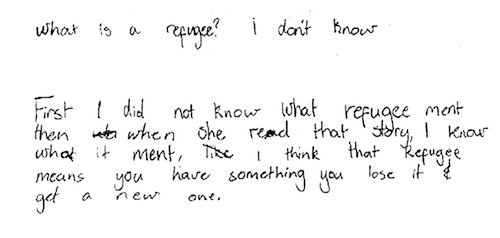 Figure 1. Definitions: Who is a refugee?
Figure 1. Definitions: Who is a refugee?
Gradually the children were able to fill out their definitions.
Figure 2. Definitions: Who is a refugee?
In the next example, a child was able to draw upon personal experience to write an elaborated definition. This definition argues that each of us is the total of our lived experiences and so each one of us is different.
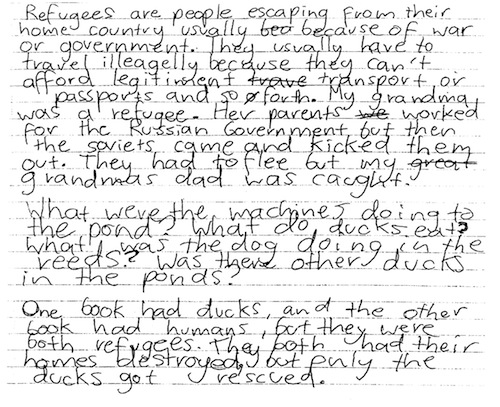 Figure 3. Definitions: Who is a refugee?
Figure 3. Definitions: Who is a refugee?
Some weeks into the inquiry I sorted the children’s current definitions and found they fell into five different groups. I wrote a sample definition from each of these groups on a large chart. At the start of following sessions we focused on just one of these definitions. Individual children were asked to either speak in support of this definition or to argue against it. This activity noticeably sharpened children’s understandings.
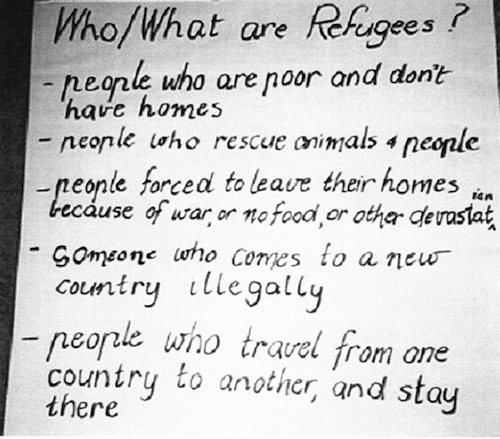 Figure 4. Summary of children’s various definitions.
Figure 4. Summary of children’s various definitions.
Accessing New Information through Picture Books
In the first sessions, two picture story books were read aloud to further develop children’s understandings about refugees. Refugees by David Miller (2004) tells what happens to a duck family when heavy earth moving equipment begins draining their swamp home. They are forced to flee and to find a safe, new, home. Home and Away by John Marsden (2008) tells the story of a family in an unnamed country through the voice of a fifteen year old. At the beginning, they are a typical neighbourhood family, but then war breaks out and their world is turned upside down. The family is forced to flee for their survival. They obtain passage on a boat, where terrible events occur. Eventually they reach land and for the first time in many months, experience hope, but sadly, they are surrounded by naval officers and imprisoned in a detention camp. The quality of their lives further deteriorates.
Processing New Information through Sketch to Stretch
One activity the children engaged with in processing new information was Sketch to Stretch (Whitin, 1996). With this activity, children create a visual image using colours and symbols to represent the message or meaning of the story. They do not simply draw to re-tell the events of the story.
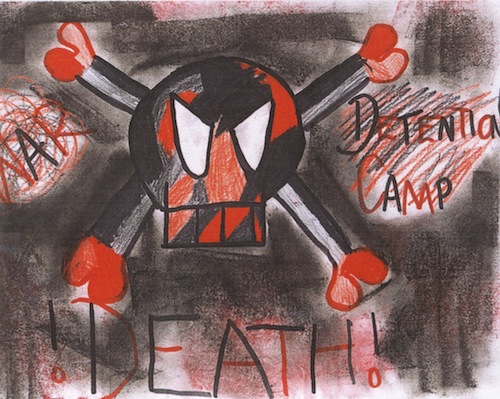 Figure 5. Death lurking between a war torn country and the detention camp.
Figure 5. Death lurking between a war torn country and the detention camp.
In this sketch-to stretch the child has represented the refugees’ lives as caught between war and the detention camp.
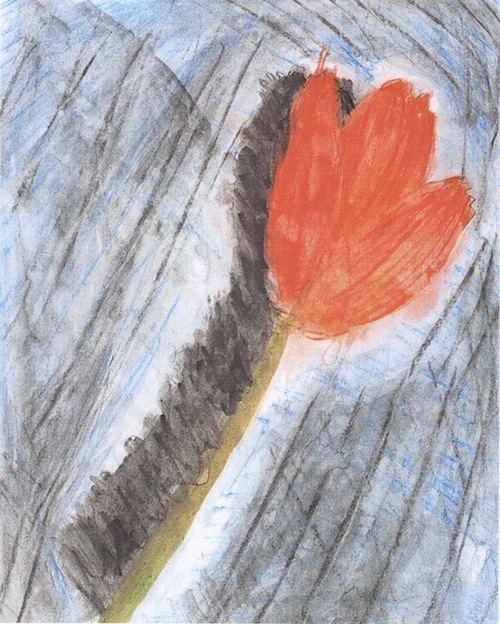 Figure 6. A dying flower signifies a dying family.
Figure 6. A dying flower signifies a dying family.
In this sketch, the child has drawn a flower to represent the life of the refugees. The black colouring along the left hand side illustrates the deteriorating quality of the refugees’ lives and the death of some of them.
Accessing New Information through Refugee Speakers
Two Somali women, both refugees from Somalia and members of the Dowson Primary School community, visited the children at Penderly Primary School to tell of their experiences in leaving their country. For twenty minutes the first guest told what happened on the morning she left her village–how she could not carry any personal possessions because in one arm she held her eleven-day-old baby, and with her other, she held the hand of her one-year-old child. She told also how her husband stayed behind to fight, and after her flight for safety, it was four years before she knew whether or not he was dead or alive.
Over 100 children from Penderly Primary School in grades 4/5/6 sat enthralled as they listened to the visitors’ stories. They asked question after question, particularly returning to “But what did you take with you when you left?” The children had difficulty conceptualising how one could flee one’s home and not take any personal possessions.
Processing New Information: Contrasting Expressive Forms
The children had a choice of activities to process the new information gleaned from the Somali women. One of these involved using different expressive forms. Each expressive form has the capacity to clarify meanings. Different people find particular art forms easier to use than others in the clarification of meaning. Visual artists, musicians or ballet dancers each use their art form as a way of expressing their life meanings. Many of us also find it easier to express some meanings with one expressive form rather than another. For example some find it easier to show the impact of hurricane winds via drawing or movement rather than by writing. It follows then that if our purpose is to develop children’s capacities to make sense of their worlds or, to develop children’s meaning making capacities, they must have opportunity to learn about and use different expressive forms in schools.
One activity we did required the children to use two different art forms, writing and drawing, to show their understanding of an event. They were asked to write, and then draw the scene where Khadra, one of our Somali visitors, fled her village. When completed, the children were asked to make notes about how they made meaning by writing and by drawing. I asked them to consider: Which elements of each expressive form were available to them? How did it differ to make meaning by drawing rather than by writing?
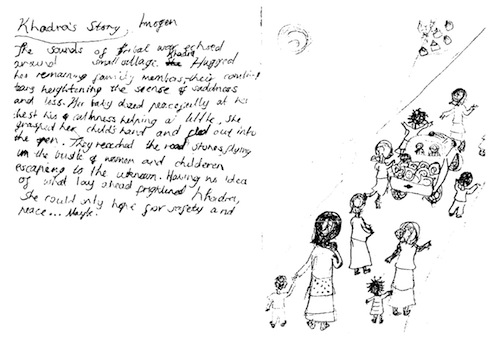 Figure 7. Making meaning by writing and drawing.
Figure 7. Making meaning by writing and drawing.
The sounds of tribal fighting echoed around the small village. Khadra hugged her remaining family members; their combined tears heightening the sense of sadness and loss. Her baby dozed peacefully at her chest his calmness helping a little. She grasped her child’s hand and fled out into the open. They reached the road, stones flying in the bustle of women and children escaping to the unknown. Having no idea of what lay ahead frightened Khadra, She could only hope for peace…..maybe. Imogen
Interestingly for me as a teacher, I learned more about the children’s understandings of Khadra’s flight from their art work than from their writing. For example, while some children used the word ‘village’ in their writing, their drawing showed a high rise apartment building.
It was noticeable how detailed the children’s written and visual descriptions were. Perhaps when the task involved writing and drawing only the initial scene, the focus was more evident for the children. The task was more manageable than, for example, being asked to do a re-telling of the whole experience.
The children found it difficult to differentiate between the elements of each expressive form they had used and so had difficulty responding to my questions, indicating that I needed to provide more teaching and demonstration. I include just one example.
 Figure 8. Children try to describe the elements of each expressive medium they drew upon to make their meanings.
Figure 8. Children try to describe the elements of each expressive medium they drew upon to make their meanings.
Processing Information through Word Chains
As the work progressed a list of words which stood for ‘refugees’ was compiled. Toward the end of this inquiry the children were asked to individually sort the words into two groups: one group was to contain those words which constructed refugees positively and the other, those words which constructed refugees negatively. When the word groups were sorted, the children were asked to order the words within each group; that is, with the negative group they were to sequence the words in order from those they thought gave the least negative impression to those which gave the most negative. This activity was great for drawing the children’s attention to nuances of meaning between different words and phrases.
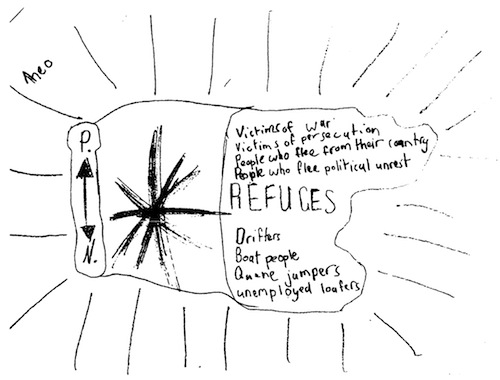 Figure 9. Ordering synonyms for ‘refugees’ from the most positive to the most negative.
Figure 9. Ordering synonyms for ‘refugees’ from the most positive to the most negative.
Accessing New Information: Reading The Island
The Island (2007) by Armin Greder is a picture book that tells what happens when a stranger is washed ashore on a small island. While the majority of the local villagers treat the stranger very badly, one, a fisherman, feels a responsibility to help the stranger, resulting in negative consequences both for the fisherman and the stranger. The children listened as the story was read aloud.
Processing New Information: Listen, Speak, Write in Role
After the initial reading and discussion, we engaged in an activity that I adapted from Susan Close, British Columbia. It involves the following processes:
• The children each choose a role as one of the main characters
•Teacher reads a story aloud as children listen in role as one of the main characters.
•The children answer in the role as their character as questions are asked by the teacher about how they were feeling or what they were thinking at key events throughout the story.
•The children re-write the story in role as the character
In this first example Lilianna re-wrote the story as the stranger.
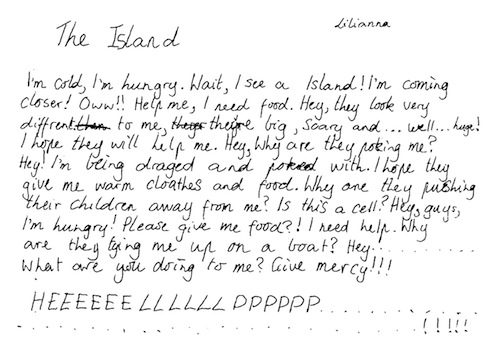 Figure 10. Liliana writes in role as the stranger.
Figure 10. Liliana writes in role as the stranger.
Claire re-wrote as the fisherman.
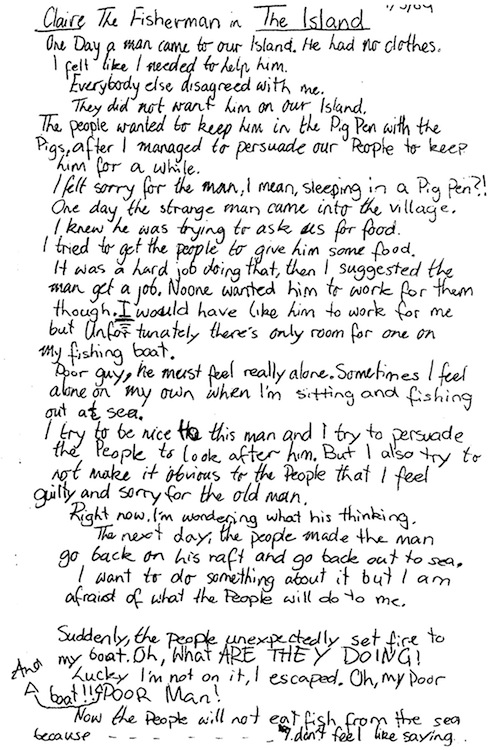 Figure 11. Claire writes in role as the fisherman.
Figure 11. Claire writes in role as the fisherman.
One of the over-riding aims of the inquiry was to develop empathy with those who are different. The children were challenged to think about the different ways of behaving when a stranger arrives in their lives. Working in pairs, they planned a role play set in a familiar context, such as a football club. One character was familiar with the context and the second was a stranger entering that context for the first time. The role play was to happen twice. One time the stranger was to be warmly welcomed, the second, he was to be made to feel very unwelcome. The children developed the role play orally and then wrote it, later sharing it with classmates.
The context for the role play included below is a local grocery store.
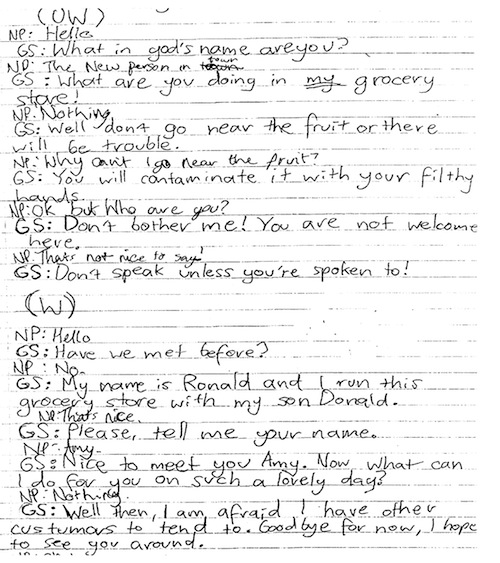 Figure 12. A role play set in grocery store, with the grocer first being most unwelcoming to a stranger, and in the second, being very welcoming.
Figure 12. A role play set in grocery store, with the grocer first being most unwelcoming to a stranger, and in the second, being very welcoming.
As well as writing and sharing their two role plays, the children were asked to compare the language used, the tone of voice, and the body language.
Figure 13. Comparison of the welcoming and unwelcoming body language, voice tone and language used.
Accessing New Information through Children’s Life Journeys
At Dowson Primary School, the children wrote their life journeys, telling simply of the places they were born and the different places they had lived. Several of these life journeys were used in Penderly Primary School as a source of new information about refugee children.
One Grade 6 student at Dowson told of her birth in Khartoum. She was born one of triplets, the only baby to survive. Part of her life story is included here. This scene is where her mother has just been told that the third baby will live.
There was a tear of joy that came running from the hurt and trapped face of fear. She was feeling that she was one of the lucky mothers. She saw her newborn child and she was like a mother that was no other to me. She looked after me so well, let me tell you. There was a farmer that had a seed and he planted the seed and he didn’t look after it. He just left it there for he crows to eat and it was just a waste of time buying the seed. There was another farmer that had a seed, and planted it and he gave good care to it and gave new birth to it. And that’s how my mother looked after me.
This piece of writing exemplifies the way cultural and religious beliefs shape the meanings we make of our lived experiences.
Concluding Activities: Bringing Students Together
The planned culminating activity was a visit by the children from Dowson to Penderly. Time was to be spent with the children playing together, chatting and jointly engaging with some class activities. The schools are not far apart and the purpose of bringing the two groups of children together was to enhance relationships between them when they met at shared community facilities, out of school hours.
This event took some time to arrange, mainly due to a lack of funding for transport of the children from Dowson to Penderly, but eventually it did occur when Dowson was able to obtain free use of the Police Bus. It was a wonderful morning. As the morning drew to a close I witnessed two children from the two different schools, exchanging email addresses. Perhaps these remarks at the end of the morning, from the police officer-driver of the police bus, say it all: “This program is building community harmony. I’m going to seek funding to ensure it continues.”
The Impact of the National Curriculum
In this classroom work on refugees, I was free to choose the topic for the inquiry as a teacher. In Penderly, where there were no refugee children, the work was encompassed within a broader topic of Belonging, which had particular relevance for children from different groups who were commencing the year in a newly formed, double Grade 4/5/6. Thus at the start of the year, time was spent with the children sharing who they were, their families, their likes, dislikes, their hopes. A particular focus was on the development of a classroom community where all children felt they belonged. This work then extended into the study of Refugees within the community. As the teacher, I was free to develop the inquiry, taking into account the knowledge, understandings and needs of two different groups of students.
This approach, beginning with student knowledge and taking account of children’s individual family, cultural and community backgrounds seems to be supported by the following principle, included in one of the key Australian National Curriculum documents.
The curriculum should allow jurisdictions, systems and schools to implement it in a way that values teacher’s professional knowledge and that reflects the needs and interests evident in local contexts, as it will be teachers who decide how best to organise learning for students. Organisation of learning should take account of individual family, cultural and community backgrounds; acknowledge and build on prior learning experiences; and fill gaps in those experiences. (The Shape of the Australian Curriculum, May 2009, p. 8).
However the first principle and guideline on the same page as this quote reads:
The curriculum should make clear to teachers what is to be taught, and to students what they should learn and what achievement standards are expected of them. This means that curriculum documents will be explicit about knowledge understanding and skills, and that they will provide a clear foundation for the development of a teaching program. (The Shape of the Australian Curriculum, May 2009, p. 8).
What does this mean? If the knowledge, understandings and skills are to be described explicitly, what room will this leave for local school systems and for teachers to plan curriculum which reflects the needs and interests evident within their local context? How will explicit descriptions of knowledge, understanding and skills allow for teachers to take account individual family, cultural and community backgrounds? An added complication is that national testing has already been implemented in Australia.
Finland, which does so well in cross cultural comparisons of education, has a National Core Curriculum. However what is to be taught is framed much less explicitly and leaves room for development of curriculum at the local level. Their curriculum documents state, ‘The national core curriculum is the national framework on the basis of which the local curriculum is formulated” (National Core Curriculum for Basic Education, 2004, p. 8). Schools in Finland are free to include learning which is specific to their community or region. Significantly, while there are quite detailed instructions about how assessment is to occur, such assessment is left to the schools. There is no national testing in Finland.
Conclusion
International conflicts today mean thousands of people are refugees. Strangely 90% of the world’s refugee population lives in the poorest countries. For example while Australia hosts roughly one refugee per 1400 citizens, Jordan, Lebanon, Chad, Iran and Tanzania host one refugee for every 100 citizens (Hathaway, 2009). How we behave toward those who are homeless and in need either diminishes or increases our humaneness.
The tension between a national curriculum, which specifies explicit knowledge, understandings and skills, and education, which starts with each child’s knowledge and is inextricably linked with that child’s life experiences and culture, seems destined to further disadvantage non-mainstream children and refugees in our schools. For all children to have opportunity to live and grow and learn about the world, knowledgeable teachers must be free to plan curriculum drawing upon their knowledge of how children learn, of their students, and of the local community, together with input from members of that community.
Children’s Books Cited
Miller, D. (2004). Refugees. Sydney, Australia: Lothian Books.
Marsden, J. (2008). Home and away. Sydney, Australia: Lothian Children’s Books.
Greder, A. (2007). The island. Melbourne, Australia: Allen & Unwin.
References
Hathaway, J. (2009, June 20). We can all help lift the refugee burden. The Age, Melbourne.
Finnish National Board of Education. National core curriculum for basic education 2004. (2004). Vammala.
National Curriculum Board. (May 2009). The shape of the Australian curriculum. Commonwealth of Australia.
Whitin, P. (1996). Sketching stories, stretching minds. Portsmouth, NH. Heinemann.
Lorraine Wilson lives in Melbourne, Australia where she works as an education consultant. Much of her consultancy is classroom based: she demonstrates holistic teaching practices in accord with the needs of individual teachers.
WOW Stories, Volume III, Issue 2 by Worlds of Words is licensed under a Creative Commons Attribution-NonCommercial-ShareAlike 4.0 International License.
Based on a work at https://wowlit.org/on-line-publications/stories/storiesiii2/.

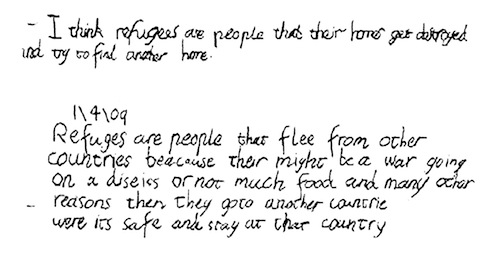
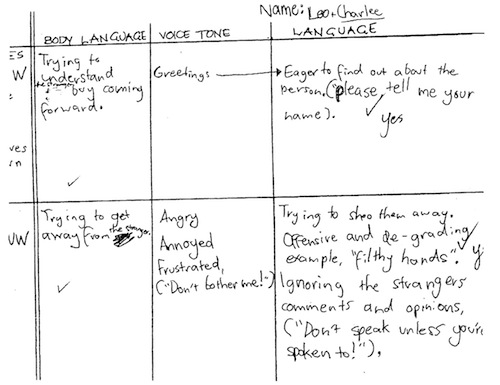
Children’s literature is one of the most important ways the we can express values as well as the values of other cultures through print. It would be a great way to compare and contrast what we hold as our cultural values here in the U.S. with those of the cultures we examine through international literature. How can children learn different view points as well as how to respect those viewpoints? How can children learn that the world is a much bigger place than the classroom, school, state, or country? For most, international literature holds the answer as well as the key to unlock those doors. TV is probably the other way, but how rich a resource we have with a book
I appreciate having some how-to steps outlined for using multicultural & international lit in the classroom. It seems so obvious and straight-forward as I read, but without guidance like this I know I’d be floundering. I’m wondering about the Hancock quote, “Moral background becomes an influential part of response to the actions and decisions of characters in literature. Readers measure the right and wrong of characters against their personal value systems.” I like the emphasis on having students articulate the values they glean from a story, rather than on the values a teacher sees, and/but I’m wondering in light of Hancock’s observation if there is a skillful way for teachers to model how bias/stereotyping/cultural difference/over-generalizing factors into what-how we see & name values? Has anyone tried an approach like this?
My above comment was suppose to follow the article about using multicultural and international lit by Deanne Paiva. Sorry for that confusion!
I appreciated how this article focused on how being a holistic teacher requires the provision of holistic/creative/broad writing responses. It is true that a range and choice of expressive forms will allow student to demonstrate their knowledge (or lack of) most vividly. It is always helpful to see examples of new expressive strategies–THANKS!
And yes — like in Finland, all teachers should be empowered to realte lessons to community issues & knowledge!!!
I am posting to this article, as for some reason what I wrote about the other article posted here.
I found this article much more interesting than the other one. I particularly enjoyed to writing samples by children, as I used to be a bilingual writing specialist. It is as interesting to read what children say in word as much as it is interesting to see how they respond through picture. Building on prior knowledge about refugees and experiences is a great way to begin a discussion about this topic.
I also like the theme of children’s life journeys. It is a new concept since children aren’t viewed as having much of a life journey being only alive a few short years, yet they have as interesting a story to tell as adults through writing.
I like the idea of taking into account the child’s family background, community, etc. in both the home country and the new country. This makes it much more interesting but also tells a much deeper tale. It connects the old with the new in a sense, but also has continuity. Reading and writing about these experiences is very important in a multicultural curriculum. International children’s literature plays a key part in this at all levels. The refugee experience is unique in this connection.